This is a continuation article on paver defects identification. In this part, we look into Heave, Horizontal Creep, Joint Sand Loss/Pumping, Missing Pavers, Patching, and Rutting.
6. Heave
Description: Heaves are areas of the pavement surface that have elevations that are higher than the surrounding areas. Heaves are typically caused by differential frost heave of the underlying soils. Heaves can also occur as a result of subgrade instability and can also occur in conjunction with settlement/rutting.
Identification: Visual examination is not always a reliable technique for detection of heaves, especially for low severity depressions. The most reliably method to identify heaves is to utilize a 3 m straight edge.
How to Measure: Heaves are measured in square metres (square feet) of surface area. The maximum height of heave defines the severity. heaves larger than 3 m (10 feet) across should be measured with a stringline.
Severity Levels:
Severity Level | Maximum Height of Heave |
Low | 5 – 15 mm [0.2 to 0.6 inches] |
Medium | 15 – 30 mm [0.6 to 1.2 inches] |
High | > 30 mm [1.2 inches] |
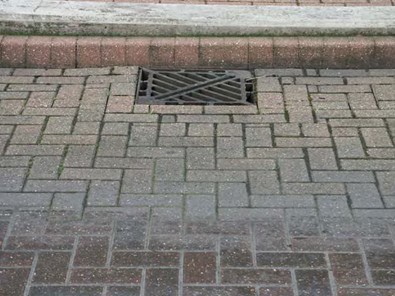
Low Severity Heave
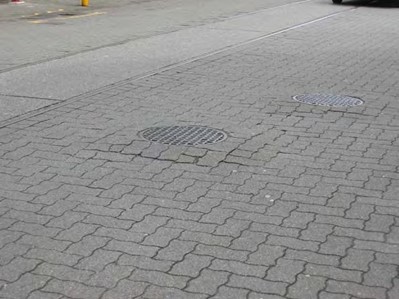
Medium Severity Heave

High Severity Heave
7. Horizontal Creep
Description: Horizontal creep is the longitudinal displacement of the pavement caused by traffic loading.
Identification: Regardless of the block bond, the pavement surface should have a uniform pattern. Shifting of the joints or pattern signifies horizontal creep.
How to Measure: Horizontal creep is measured in square metres (square feet) of surface area. The deviation from the original position defines the severity.
Severity Levels:
Severity Level | Horizontal Movement |
Low | 6 – 10 mm [0.25 to 0.4 inches] |
Medium | 11 – 20 mm [0.4 to 0.8 inches] |
High | > 20 mm [0.8 inches] |
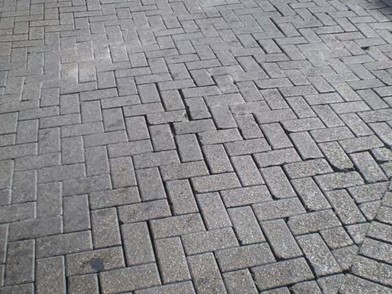
Low Severity Horizontal Creep
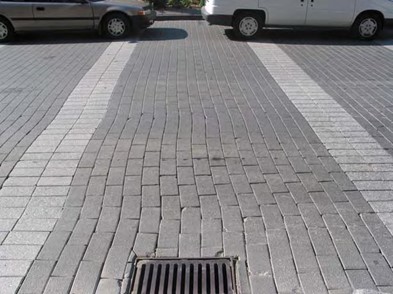 Medium Severity Horizontal Creep
Medium Severity Horizontal Creep
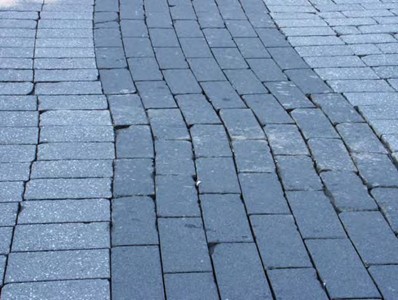
High Severity Horizontal Creep
8. Joint Sand Loss/Pumping
Description: Joint sand loss/pumping is a defect feature in which the joint has been removed. Joint sand loss can occur from a number of factors including; heavy rain, sweeping, pressure washing, pumping under traffic loading, etc. Joint sand is considered essential to providing interlock and stiffness of the paver course.
How to Measure: Joint sand loss/pumping is measured in square meters of surface area. The depth of sand loss measured from the bottom of the chamfer down defines the severity.
Severity Levels:
Severity Level | Depth of Sand Loss |
Low | < 10 mm [0.4 inches] |
Medium | 10 – 25 mm [0.4 to 1 inch] |
High | > 25 mm [1 inch] |
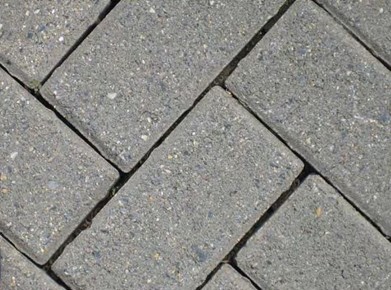
Low Severity Joint Sand Loss
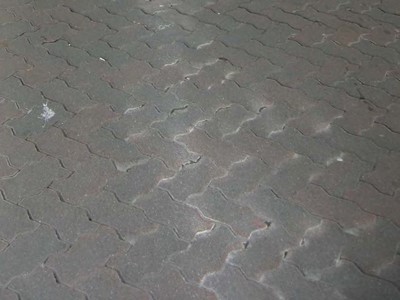
Medium Severity Joint Sand Loss
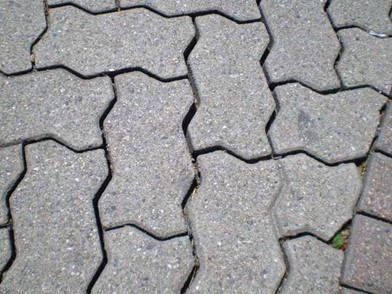 High Severity Joint Sand Loss
High Severity Joint Sand Loss
9. Missing Pavers
Description: Missing pavers, as the name implies, refers to sections of pavement that are missing pavers, that may have resulted from removal or disintegration/damage. Missing pavers can compromise the integrity of the pavement structure and promote surface roughness similar to potholes in flexible pavements.
Identification: Sections that are missing pavers.
How to Measure: Missing pavers are measured in square metres (square feet) of surface area. The severity is evaluated by degree of distress. Random individual paver damage would not be counted.
Severity Levels:
Severity Level | |
Low | Random individual missing pavers. |
Medium | Missing 2 or more pavers in one area and ride quality unaffected. |
High | Missing 2 or more pavers in one area and ride quality affected. |
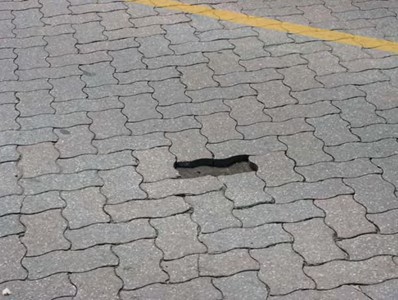
Low Severity Missing Pavers
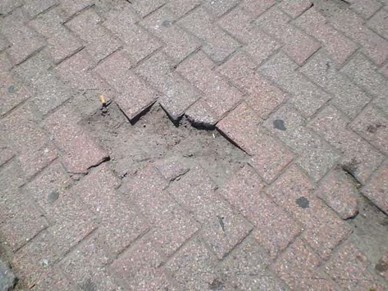
Medium Severity Missing Pavers
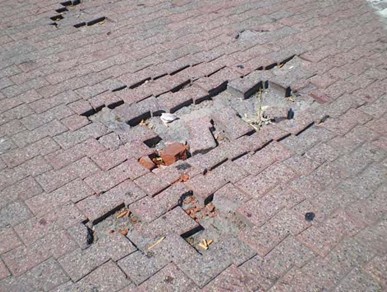 High Severity Missing Pavers
High Severity Missing Pavers
10. Patching
Description: Patching refers to sections of pavement that are missing pavers and have been reinstated with a dissimilar material. Patch quality can compromise the integrity of the pavement structure and promote surface roughness similar to potholes in flexible pavements.
Identification: Sections of dissimilar materials such as asphalt, etc.
How to Measure: Patches are measured in square metres (square feet) of surface area. The severity is evaluated by the quality of the patch.
Severity Levels:
Severity Level |
|
Low | Patch is in good condition and ride quality is unaffected. |
Medium | Patch is in good to fair condition and ride quality is starting to deteriorate. |
High | Patch is in poor condition and ride quality is affected. |
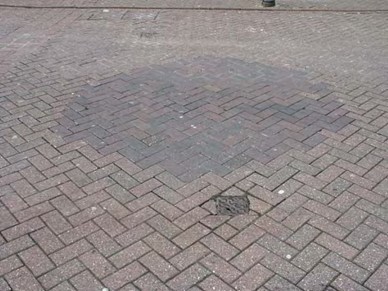
Low Severity Patch
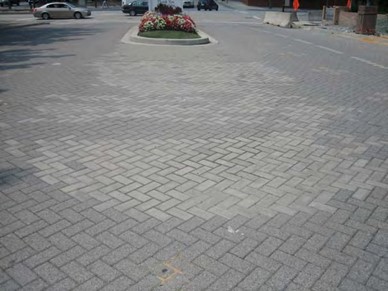
Medium Severity Patch
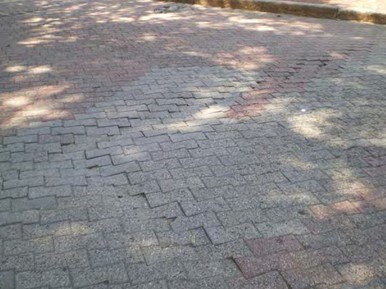 High Severity Patch
High Severity Patch
11. Rutting
Description: Rutting is a surface depression in the wheel path. Depressions are areas of the pavement surface that have elevations that are lower than the surrounding areas. Rutting is typically caused by settlement of the underlying subgrade or granular base under vehicle loading. Depressions can cause roughness in the pavement and, when filled with water, can cause hydroplaning of vehicles.
Identification: Locate rutting by visual assessment and measure rutting with a straight edge. Rutting in a single wheel path is usually quite evident. However, depressions caused by static wheel loads are measured as rutting.
How to Measure: Rutting is measured in square metres (square feet) of surface area. The maximum rut depth defines the severity. To determine the rut depth, a straight edge should be placed across the rut and the depth measured in millimeters (inches). Rut depth measurements should be taken along the length of the rut. Varying severities of rutting along the length of the rut should be measured individually.
Severity Levels:
Severity Level | Maximum Depth of Rut |
Low | 5 – 15 mm [0.2 to 0.6 inches] |
Medium | 15 – 30 mm [0.6 to 1.2 inches] |
High | > 30 mm [1.2 inches] |
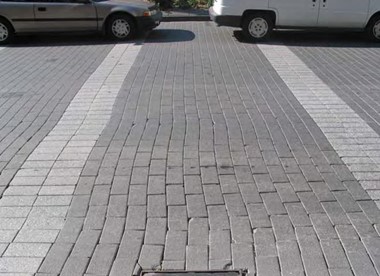
Low Severity Rutting
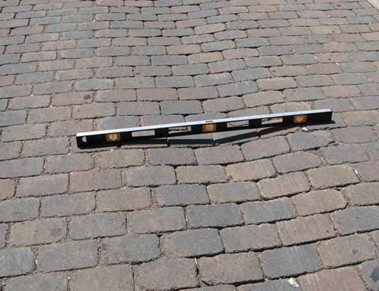
Medium Severity Rutting
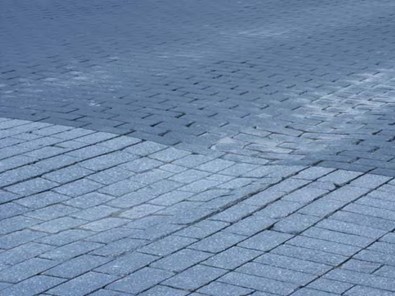 High Severity Rutting
High Severity Rutting
Summary
This is the last part of the article on identifying and measuring paver defects. Click here for the part 1 of this article.










